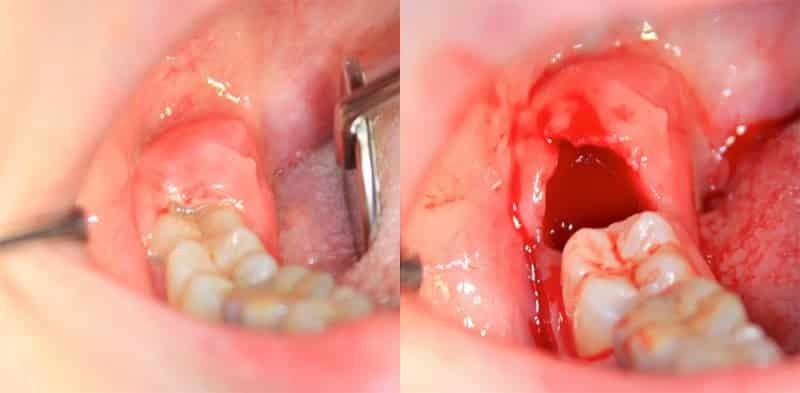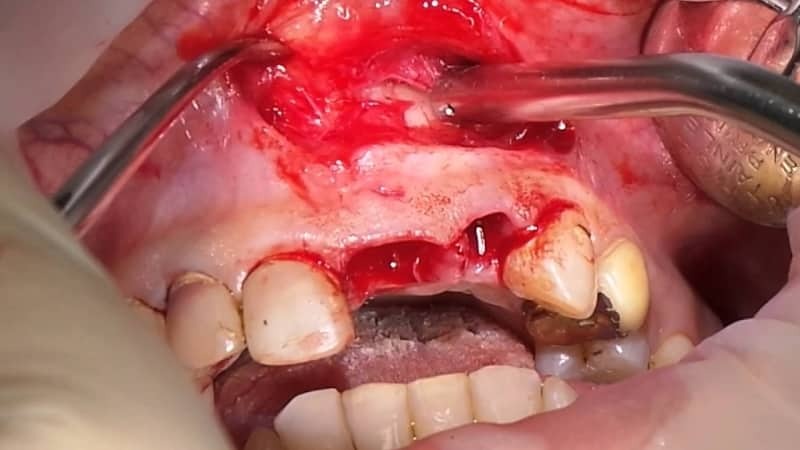Laparoscopic surgery to remove the gallbladder

Perform the operation.
Like the usual laparoscopic surgery is performed under anesthesia. The patient during the operation sleeps and does not feel anything. During the operation punctures of the abdominal wall are made. Most often, during holicystectomy, four punctures are performed. Two punctures have a diameter of 5 mm, and the other two 10 mm.
Through these holes in the abdominal cavity special tools are introduced, which are called trocar. These are hollow tubes equipped with valves at the end. During the operation, trocars do not damage tissues and organs, but only spread them. Through the trocar, which is installed in the abdominal cavity, various surgical instruments that are used during laparoscopic surgery are easily introduced. The main and most important element in laparoscopy is a laparoscope - an optical system that has two optical channels.
The laparoscope consists of an optical tube that is inserted into the abdominal cavity;Nipple, it is used to connect the light guide and eyepiece, which connects to a special video camera. With the light guide, cold light is applied to the abdominal cavity during the operation. The image is transmitted by the camera to a video monitor, which the surgeon looks at during the operation.
To create space in the abdominal cavity, which is necessary for inspection of organs and for work, sterile carbon dioxide is introduced. This allows you to see on the screen everything that happens inside the abdominal cavity.
During the operation to remove the gallbladder, the surgeon dissects the formed adhesions, which are often found around the gallbladder. They are formed mainly during the chronic inflammatory process. After this, the doctor selects the bladder artery, which supplies the blood with a bladder. Then follows to the bladder duct, which connects the gallbladder with the main bile duct. In this area special clips are made, made of titanium, which is a biologically inert metal. The surgeon separates the gallbladder from the liver. This procedure is performed using a special device called an electrocoagulator. It allows you to dissect and simultaneously coagulate the tissue. This allows you to carry out an operation with little or no blood. The gallbladder with holicystectomy is excreted through a small cosmetic puncture in the abdominal cavity located in the navel area. Sometimes for this operation it is necessary to widen the hole without disturbing the cosmetic effect. After the operation, several stitches are applied.
What are the advantages of cholecystectomy in contrast to a cavitary operation?
For holicisectomy instead of a wide incision, only 4 punctures are performed. Thus the abdominal wall is traumatized in the minimal volume. In the postoperative period, the patient experiences a minimum of pain. A couple of hours after the patient comes out of anesthesia, he can walk independently and serve himself. Reduces the stay in the hospital for 1-4 days. Man quickly restores his strength and ability to work. Several times the number of postoperative hernias decreases. After laparoscopic surgery, there are no huge scars, after a few months, scarring after punctures in many patients is almost not noticeable.
After the operation on the first day, the patient should not eat, but you can drink. The patient is allowed to get up and walk a couple of hours after he leaves the anesthesia. On the second day the doctor allows for light meals, but in moderation. You can eat fruit, cottage cheese, lean boiled meat, broth, etc. On the second day the patient can take light food without restrictions, on the third day the diet approaches the everyday, at the request of the patient himself.
The doctor determines the patient to prescribe according to his condition. As a rule, the patient is in hospital for no more than four days. Sutures are removed on an outpatient basis on the 7-10th day after the operation. Restoration of work capacity for each patient individually.
The patient can lead a normal life after full recovery.
In what case do they resort to holicystectomy?
Many doctors believe that laparoscopic surgery is performed when all forms of cholelithiasis are detected, as well as in its complications. The operation is prescribed for chronic cholecystitis, with acute cholecystitis, in the presence of stones in the bile ducts, with mechanical jaundice. Considering the fact that gallstones are formed in case of metabolic disorders in the body, removal of only stones is futile, because they can form again with time. A radical method to permanently get rid of gallstones is the removal of the gallbladder.
There are some contraindications for holicystectomy, mainly the presence of operations in the organs of the abdominal cavity. Including, if performed operations on the stomach, duodenum, liver, spleen. After the performed operations, the organs can grow to the anterior abdominal wall and with the introduction of instruments that are used in laparoscopy, they can injure these organs. Another contraindication is a lung disease associated with respiratory failure. During the operation, gas is injected and the diaphragm and muscle can be displaced towards the chest, which will limit the spreading of the lungs during inspiration.
In some cases, laparoscopic surgery can not be completed with a laparoscopic approach, you have to resort to a cavitary operation. This occurs when there are adhesions in the area of the gallbladder, when the gall bladder is strained, or tightly adheres to the surrounding organs. In this case, when removing the bladder, there is a great risk of damage to neighboring organs. Therefore, you must go to an open operation. Before the operation, the surgeon is obliged to inform the patient of the occurrence of an unforeseen situation.



